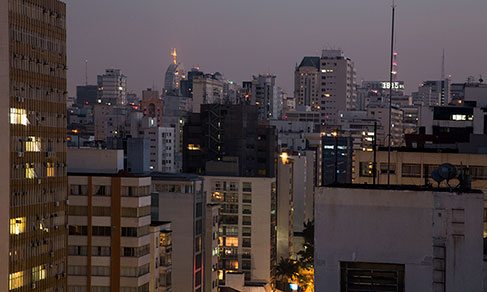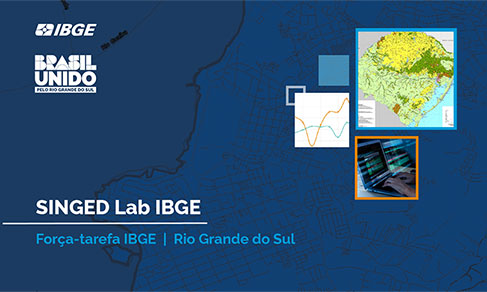National Accounts
GDP up 1.1% closing 2019 at R$7.3 trillion
March 04, 2020 09h00 AM | Last Updated: March 06, 2020 11h14 AM

The Gross Domestic Product (GDP), released today by the IBGE, closed 2019 with an increase of 1.1%, totaling R$7.257 trillion. This is the third positive result, after the increases of 1.3% in 2017 and 2018, which interrupted the falls in 2015 and 2016. The per capita GDP changed 0.3%, in real terms, reaching R$34,533 in 2019.
“It has been three years of positive results, but the GDP has not yet offset the fall of 2015 and 2016 and is at the same level of the third quarter of 2013”, says Rebeca Palis, IBGE National Accounts manager. “The biggest contribution for the GDP advance came from the household consumption, which rose 1.8%. On the supply side, the highlight was the service sector, which represents two third of the economy.”
Ms. Palis clarifies that the integration of the foreign sector data, which were sent with delay in the third quarter, did not exert impact on the 2019 GDP result. “It affected only the exports, due to the continuous negative contribution of the foreign sector. The foreign sector recorded decrease of 0.5%, while the domestic demand contributed with 1.7% to the result”, explains Ms. Palis.
The service sector grew 1.3%, leveraged by information and communication activities (4.1%), real estate activities (2.3%), trade (1.8%), other service activities (1.3%), financial, insurance and related services activities (1.0%) and transportation, storage and mailing (0.2%). Public administration, defense, health and education, and social security (0.0%) remained stagnant in the year.
In the sector of industry, the activities of electricity and gas, water, sewage and waste management grew 1.9% in relation to 2018, leveraged by the increase of 1.6% in construction. The negative highlight was mining and quarrying, with a fall of 1.1% in the year. Manufacturing industries remained stable at 0.1%.
“The industry’s behavior was different in relation to 2018, it was now leveraged by the growth in construction, after five years of negative performance. The manufacturing industry, which grew in 2018, remained stagnant in 2019”, says Ms. Palis.
In agriculture, whose weight is only 5% in the GDP account, the highlights were corn crops, which recorded increase of 23.6% and an expressive gain in productivity; cotton (39.8%), orange (5.6%) and beans (2.2%). On the other hand, it had a negative change in crops as coffee (-16.6%), rice (-12.6%), soybeans (-3.7%) and sugar cane (-1.0%). The livestock performance in 2019 was positively influenced by the narrowing of the commercial relationship with China, due to the African swine fever in the Asian country.
Investment up and savings down in 2019
The investment rate in 2019 was 15.4% from GDP, slightly above the one recorded in the previous year (15.2%). The savings rate was 12.2% in 2019 (against 12.4% in 2018). Among the components of the domestic demand, there was advance in household consumption (1.8%), and in the gross fixed capital formation, in 2.2%. The government consumption retreated 0.4%.
GDP advances 0.5% in the quarterly comparison
In the fourth quarter of 2019, the GPD advanced 0.5% in the comparison with the third quarter, recording the ninth positive result in a row in this comparison. Services and industry had positive changes of 0.6% and 0.2%, respectively, while agriculture retreated 0.4%. Against the fourth quarter 2018, the GDP advanced 1.7%, in the twelfth positive result in a row, after eleven quarters of decrease in this comparison basis.




















